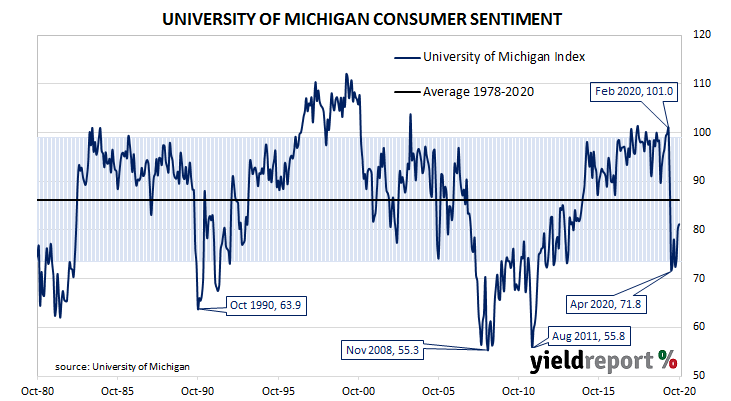Summary: US consumer confidence up again in October; University of Michigan index higher than expected; concerns regarding current conditions “largely offset” by views of economic prospects.
US consumer confidence started 2020 at an elevated level. However, by March, surveys had begun to reflect a growing uneasiness with the global spread of COVID-19 and its reach into the US. After a plunge in April, US household confidence began to recover, albeit in a haphazard fashion.
The latest survey conducted by the University of Michigan indicates the average confidence level of US households improved modestly while remaining at a level under the long-term average in October. The University’s preliminary reading from its Index of Consumer Sentiment registered 81.2, more than the generally expected figure of 80.0 and a little higher than September’s final figure of 80.4.
“Slowing employment growth, the resurgence in COVID-19 infections and the absence of additional federal relief payments prompted consumers to become more concerned about the current economic conditions. Those concerns were largely offset by continued small gains in economic prospects for the year ahead,” said the University’s Surveys of Consumers chief economist, Richard Curtin.

The report was released on the same day as September retail sales figures and the August industrial production numbers. US Treasury bond yields were largely unchanged and, by the end of the day, 2-year and 10-year Treasury yields remained unchanged at 0.14% and 0.74% respectively while the 30-year yield finished 1bp higher at 1.53%.
Less-confident households are generally inclined to spend less and save more; some drop-off in household spending could be expected to follow. As private consumption expenditures account for a majority of GDP in advanced economies, a lower rate of household spending growth would flow through to lower GDP growth if other GDP components did not compensate.

